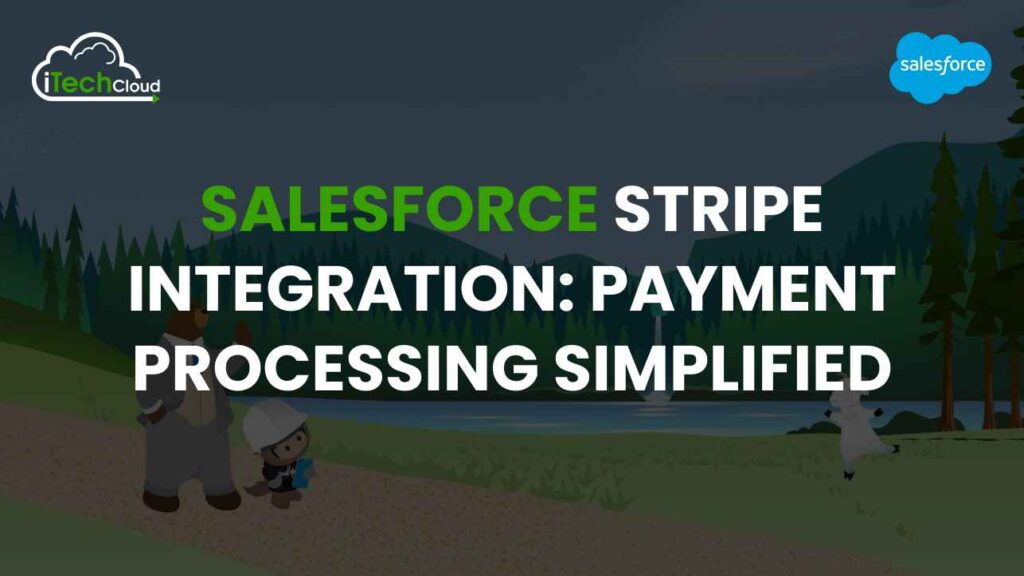Salesforce Stripe Integration: Payment Processing Simplified

In today’s fast-paced digital landscape, businesses are continuously seeking ways to optimize their operations and enhance customer experiences. One area that holds immense importance is payment processing. Seamless payment workflows not only improve efficiency but also contribute to customer satisfaction and retention. Salesforce, a leading CRM platform, and Salesforce Stripe Integration, a renowned payment processing solution, offer robust capabilities in their respective domains.
Integrating these two platforms can revolutionize payment processing for businesses, providing centralized data management and automation capabilities. This comprehensive blog aims to guide you through the step-by-step process of integrating Salesforce Stripe Integration, simplifying payment processing and empowering your business to thrive in the digital age.
Understanding Salesforce Stripe Integration:
The Salesforce Stripe Integration offers numerous benefits, including centralized payment data management, streamlined workflows, and improved customer experiences. By connecting these platforms, businesses can automate payment processes, gain valuable insights into customer transactions, and optimize their operations.
Setting Up a Salesforce Developer Account:
The integration journey begins with setting up a Salesforce Developer Account, which grants access to Salesforce’s development environment. This account allows users to create custom applications and integrate third-party services, laying the foundation for seamless integration with Salesforce Stripe Integration.
Creating a Connected App in Salesforce:
Once logged into the Salesforce Developer Account, users create a connected app to establish communication between Salesforce Stripe Integration. This involves providing basic app details and configuring OAuth settings to generate essential authentication credentials, facilitating secure communication between the two platforms.
Configuring Salesforce Stripe Integration Account Settings:
In parallel, users configure their Salesforce Stripe Integration account settings to obtain API keys required for the integration. These API keys, including the Publishable Key and Secret Key, serve as authentication tokens, enabling encrypted communication between Salesforce and Stripe.
Installing and Configuring Stripe Package in Salesforce:
With the prerequisites in place, users proceed to install the Stripe Package from the Salesforce AppExchange. This package provides pre-built components and functionalities tailored for seamless Salesforce Stripe Integration. Users configure the package settings by entering their Stripe API keys and defining custom mapping fields to synchronize data between the platforms accurately.
Mapping Salesforce Objects to Stripe Data:
An essential aspect of the integration process involves mapping Salesforce objects, such as Contacts, Accounts, and Opportunities, to corresponding entities in Stripe. This mapping ensures that relevant data fields are synchronized accurately between the two platforms, facilitating seamless data exchange and consistency.
Implementing Payment Workflows in Salesforce:
With the integration configured, users leverage Salesforce’s workflow automation features to streamline payment processes. Custom workflows and triggers are created to automate tasks such as invoice generation, payment reminders, and updating payment statuses based on customer interactions, enhancing operational efficiency and reducing manual intervention.
Testing and Validation:
Before deployment, thorough testing is imperative to validate the integrity and functionality of the integration. End-to-end testing scenarios, encompassing payment processing and invoice generation, are conducted to identify and rectify any potential issues, ensuring a smooth transition to production.
Training and Adoption:
As the integrated solution is deployed across the organization, comprehensive training is provided to users to facilitate seamless adoption. Training sessions encompass navigation within Salesforce, troubleshooting common issues, and maximizing the benefits of the integrated solution, empowering users to leverage its full potential.
Ongoing Maintenance and Optimization:
Post-deployment, ongoing maintenance is crucial to ensure the integration remains efficient and up-to-date. Regular monitoring of performance, addressing issues, and incorporating user feedback are essential for optimizing the integration and aligning it with evolving business requirements.
Conclusion:
Salesforce Stripe Integration represents a significant milestone in streamlining payment processing for businesses. By following the step-by-step guide outlined in this blog, organizations can seamlessly integrate these platforms, unlock operational efficiencies, and deliver enhanced customer experiences. Embracing Salesforce Stripe Integration positions businesses at the forefront of innovation, enabling them to thrive in the digital landscape and achieve sustainable growth.

